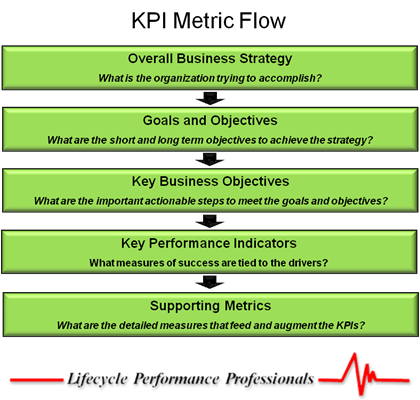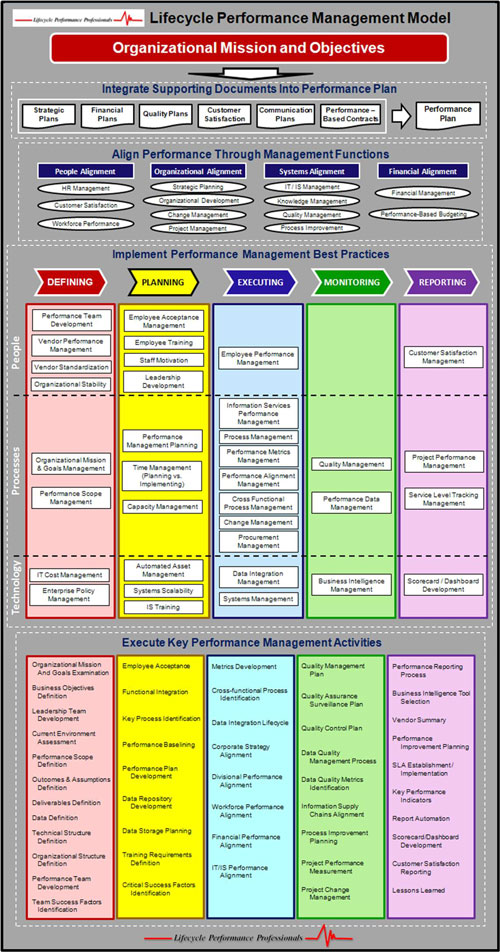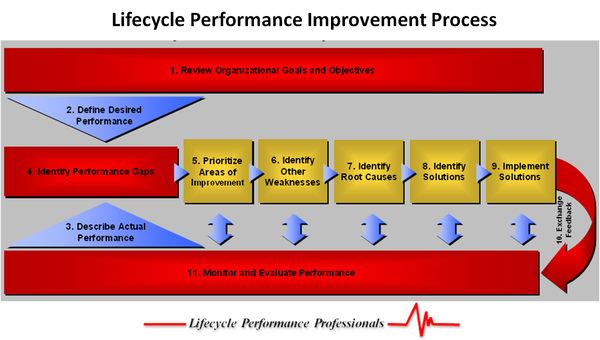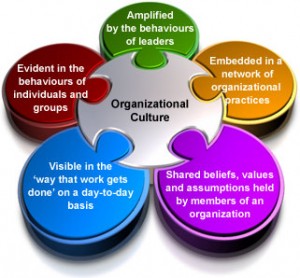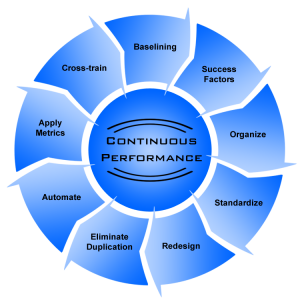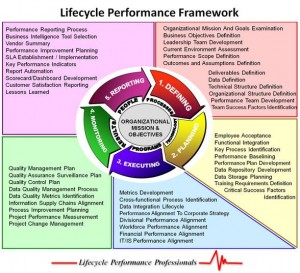 Performance management is the foundation of any organization that has a vision and knows where they want to be in the near and long term future. As today’s rapidly evolving business environment challenges organizations to adapt to constant change, the need for organizations to be sure that their projects and activities are aligned with overall strategic goals and business objectives is critical. Performance management is the gauge that lets you know whether or not you are reaching strategic goals and which areas within your service delivery could use improvement. It used to be that performance was isolated to one department. Today, every division within an organization can benefit from it. Performance management spans across various management functions and helps ensure that your people, processes and technology are working together to achieve your organization’s missions and goals. This article illustrates how performance management relates to various major management support functions within your organization.
Performance management is the foundation of any organization that has a vision and knows where they want to be in the near and long term future. As today’s rapidly evolving business environment challenges organizations to adapt to constant change, the need for organizations to be sure that their projects and activities are aligned with overall strategic goals and business objectives is critical. Performance management is the gauge that lets you know whether or not you are reaching strategic goals and which areas within your service delivery could use improvement. It used to be that performance was isolated to one department. Today, every division within an organization can benefit from it. Performance management spans across various management functions and helps ensure that your people, processes and technology are working together to achieve your organization’s missions and goals. This article illustrates how performance management relates to various major management support functions within your organization.
Get Free Access To Victor’s Insiders Secrets Club
Strategic Planning
Strategic planning is the process of determining a company’s long-term goals and then identifying the best approach for achieving them. Strategic planning plays a vital role in the performance of your organization. In order for strategic goals to be achieved, strategic planning must be aligned to performance measurements. These performance measurements allow executive management to gauge the effectiveness of the organizational strategic plan and determine how the budget and projects will be setup in the future. The strategic planning process is discussed in more detail in the planning phase.
Organizational Development
Often used interchangeably with organizational effectiveness, organizational development is the process through which an organization develops the internal capacity to be the most efficient towards its mission work and to sustain itself over the long term. This definition highlights the explicit connection between organizational development work and the achievement of organizational mission. Performance management directly relates to organizational development, since OD is primarily focused on improving the performance of organizations and the people within them. Whatever your organizational challenges, the starting point is to get a clear, objective view of your organization’s performance abilities, such as strengths and limitations. Identifying proper performance attributes is essential, because sound management decisions can only be made when performance attributes are identified and measured accurately. In order to reach anticipated organizational targets, you must be able to tie the performance and motivation of individuals to the overall strategic objectives. The Lifecycle Performance Framework processes illustrate how performance management, organizational development and strategic planning share interrelated processes to accomplish organizational goals. Organizational development processes are discussed in more detail in the planning and execution phases.
Get Free Access To Victor’s Insiders Secrets Club
Change Management
Change management is a systematic approach to dealing with change within every perspective of an organization, from systems to personnel to projects to functions. Change management is a comprehensive, often difficult management function to properly implement. There’s the saying “Organizations don’t adapt to change; their people do.” With that outlook, it is easy to understand how performance management plays a critical part in managing change. Implementing change within an organization often requires a change in how employees execute things. You can implement the most advanced change management tools money can buy, but if your people don’t buy into or fully support the initiatives, their performance will suffer and ultimately the organization will be ineffective, or less efficient than before.
Every system, personnel, and procedural change within an organization should be implemented with the goal of achieving an improvement in performance some form. The actual improvement should be compared to the predicted improvement to assess the effectiveness of the change. This guide discusses managing your organization during its many changes throughout the performance lifecycle.
Project Management
Project management is the discipline of organizing and managing resources (e.g. people) in such a way that the project is completed within defined scope, quality, time and cost constraints. A project is a temporary and one-time endeavor undertaken to create a unique product or service, which brings about beneficial change or added value. Performance measurement is an area within the Project Management Institute’s Project Management Body of Knowledge (PMBOK). It is the link between performance management and project management, where cost, schedule and scope performance are measured and monitored throughout each phase of the Project Lifecycle. Project performance reporting is the process of collecting project baseline data and distributing performance information to stakeholders throughout the project. Implementing project performance measurement ensures that your reporting clarifies how resources are being used to obtain the objectives of the project. Measuring project performance is discussed in detail in the monitoring phase.
Get Free Access To Victor’s Insiders Secrets Club
Customer Satisfaction
Customer satisfaction is the measurement or determination that a product or service meets a customer’s expectations, based on predetermined quality and service requirements. It is said that customer satisfaction equals perception of performance divided by expectation of performance. There is a direct relationship between performance and customer satisfaction, where the better you perform to customer expectations, the more satisfied customers will be. Customer satisfaction is your organization’s level of performance through your customers, employees, and/or stakeholders perspective. In fact, many times customer satisfaction feedback, if requested properly, can provide information and insight for achieving breakthrough increases in organizational performance and effectiveness. When measuring customer satisfaction, organizations should review their objectives and ensure that the customer service strategy is linked to those objectives. How to ensure that your organizational objectives are linked to your customer service strategy are discussed in the reporting phase.
Workforce Performance Management
Workforce performance management is the strategic alignment of an organization’s human capital with its business activities. It is a methodical process of analyzing the current workforce, determining future workforce needs, identifying the gap between the present and future, and implementing solutions so the organization can accomplish its mission, goals, and objectives.
People are the most important aspect to any organization. Therefore, the performance of the people within an organization will greatly impact the overall performance of the organization. While most employees understand what they need to do, workforce performance management tells them how well they must do it. The greatest benefit to workforce performance management is the process of aligning employee performance to organizational objectives and goals. This guide explains how to evaluate individuals on their alignment with corporate goals and their contributions to business results in the planning section. Functions within workforce performance management are Recruit and Hire Management, Compensation Management, Incentive Management, Goals Management, Learning Management, Competency Management, and Performance Measurement. These functions are described in the executing phase.
Get Free Access To Victor’s Insiders Secrets Club
IT Performance Management
IT performance management assists organizations with the increasing demands of maximizing value creation from technology investments, reducing risk from IT, decreasing architectural complexity, and optimizing overall technology expenditures. Behind people, technology is the next critical factor in maximizing efficiency and organizational performance. Many organizations from small to large are using IT strategically to support profitable growth. IT performance management includes maximizing technology to improve service delivery in every area of the organization. IT performance management utilizes such technology as unified management reporting and dashboard tools to enhance performance and drives business processes. How to find the right technologies to enhance your business intelligence, and choosing the right business intelligence tools are discussed in detail in the reporting phase.
Knowledge Management
Knowledge management refers to the guidelines, policies, and practices that an organization uses to create and transfer information to support the performance of the people in the organization. These can include various documents and copyrights, and intangible processes, models and methods that their people use to get work done. The impact of knowledge management on key business results is seen through its potential for improving the performance of business processes. Take call centers for example. They may handle hundreds, even thousands of calls a day. It would be too much too ask for call center representatives to be able to resolve the majority of these calls without a knowledge management system in place. With a knowledge management system, the call center representatives have more information and resources to access and can thus resolve more customer requests. Performance benefits can be seen in such areas as first call resolution, time to resolve, and customer satisfaction. Knowledge management drives performance by linking knowledge to critical functions which impact business and putting the supports in place to ensure knowledge is leveraged across people and circumstances.
Get Free Access To Victor’s Insiders Secrets Club
Quality Management
Quality management is a method for ensuring that all the activities necessary to design, develop and implement a product or service are effective and efficient with respect to the system and its performance. Quality management includes several processes that enable organizations to ensure quality. Among them are quality planning, quality assurance, quality control, quality audits and quality surveillance. Quality planning is defined as a set of activities whose purpose is to define quality system policies, objectives, and requirements, and to explain how these policies will be applied, how these objectives will be achieved, and how these requirements will be met. It is always future oriented. Quality assurance (QA) is defined as a set of activities whose purpose is to demonstrate that an entity meets all quality requirements. QA activities are carried out in order to inspire the confidence of both customers and managers, confidence that all quality requirements are being met.
Quality control is defined as a set of activities or techniques whose purpose is to ensure that all quality requirements are being met. In order to achieve this purpose, processes are monitored and performance problems are solved. Quality audits examine the elements of a quality management system in order to evaluate how well these elements comply with quality system requirements. Quality surveillance is a set of activities whose purpose is to monitor an entity and review its records to prove that quality requirements are being met. Performance measurement is a necessary instrument for quality management because in order to measure quality, you must first apply performance expectations and standards. In the PMBOK, the performance measurement process group falls under the quality management knowledge area. Quality management is discussed in greater detail in the monitoring phase.
Process Improvement
Process improvement is a series of actions taken to identify, analyze and improve existing processes within an organization to meet new goals and objectives. There are many process improvement methodologies that differ in approach, but the one thing they all have in common is the outcome of better performance. In fact, by definition performance improvement is the concept of measuring the output of processes or procedures, then modifying the processes or procedures in order to increase the output, increase efficiency, or increase the effectiveness of the processes or procedures. Often times, the most critical processes that impact business success are those that require support from multiple functional groups. Identifying and managing cross-functional processes and removing the functional silos that inhibit business culture are discussed in great detail in the planning and executing phases.
—————————–
Victor Holman is a Business Performance Expert and CEO of Lifecycle Performance Professionals. His Business Done For You Service helps small business owners level the playing field with larger, higher budget competitors by delivering high performance marketing, management and social media solutions that build credibility and expert status, and generate steady leads and increased profits.
Get FREE ACCESS to his highly acclaimed Insider’s Secrets Club, which provides the latest business growth tools and strategies to explode your income.
Get a FREE Performance Management Kit at http://www.lifecycle-performance-pros.com/Free-Stuff/free-kit.html
Visit Victor at www.lifecycle-performance-pros.com or www.victorholman.com today
